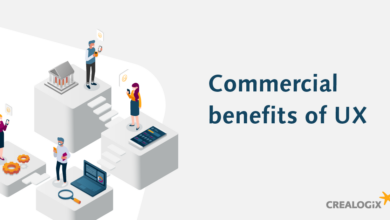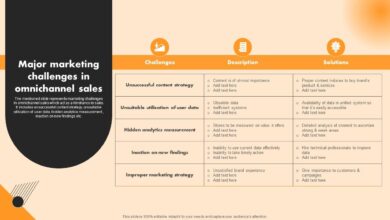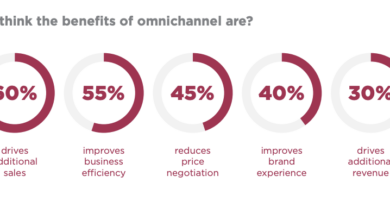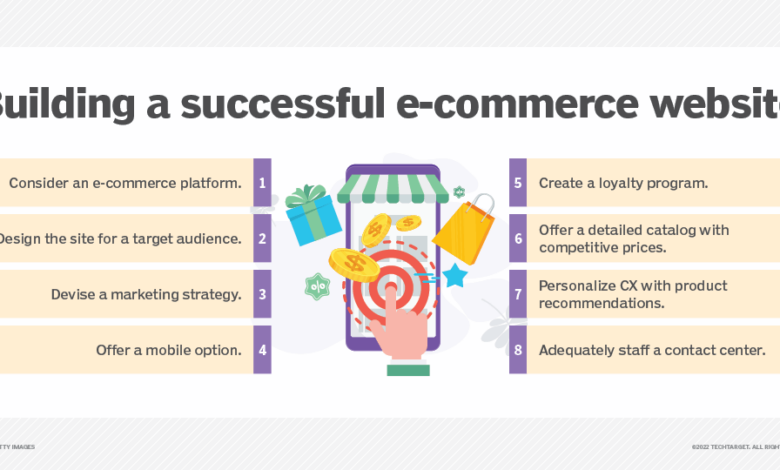
Top Three Requirements for Ecommerce Success
Top three requirements for ecommerce success? Think you know the game? Think again! While everyone talks about killer products and slick marketing, true online retail domination hinges on three crucial pillars: an exceptional customer experience, robust and reliable technology, and effective marketing and sales strategies. Get these right, and you’re well on your way to building a thriving online empire.
Ignoring them? Well, let’s just say your shopping cart might stay a little emptier than you’d like.
This isn’t just about theory; it’s about the practical steps you can take
-today* to boost your bottom line. We’ll dive into the specifics of each requirement, offering actionable insights and real-world examples to help you navigate the complexities of the e-commerce world. Prepare to rethink your strategy and discover the secrets to unlocking sustainable growth.
Exceptional Customer Experience
In today’s fiercely competitive e-commerce landscape, providing an exceptional customer experience is no longer a luxury—it’s a necessity. It’s the cornerstone upon which loyalty is built, positive word-of-mouth spreads, and ultimately, sustainable business growth is achieved. A positive customer journey directly translates into increased sales, repeat business, and a strong brand reputation. Ignoring this crucial aspect can lead to lost customers and a damaged brand image.
Customer Journey Mapping
Understanding the customer journey is paramount to optimizing the experience. A customer journey map visually represents the steps a customer takes when interacting with your e-commerce business, from initial awareness to post-purchase engagement. By identifying key touchpoints and potential pain points, businesses can proactively address areas for improvement. For example, a typical journey might involve discovering your product through social media, browsing your website, adding items to a cart, checking out, receiving order confirmation, receiving the product, and potentially interacting with customer service.
Pain points might include a confusing website navigation, a lengthy checkout process, or slow delivery times. Mapping these allows for targeted improvements. A well-designed map will highlight where customers might experience friction and suggest ways to streamline the process.
Comparison of Customer Service Strategies
Different customer service strategies cater to varying customer needs and preferences. The optimal approach often involves a multi-channel strategy that leverages the strengths of each method.
| Strategy | Pros | Cons | Best Use Cases |
|---|---|---|---|
| Live Chat | Instantaneous support, personalized interaction, improved customer satisfaction | Requires real-time staffing, can be challenging to scale, not suitable for complex issues | Addressing simple queries, providing immediate assistance during checkout |
| Allows for detailed explanations, provides a written record, can be handled asynchronously | Slower response times, less personal interaction, can lead to lengthy back-and-forths | Handling complex issues, providing detailed order information, sending follow-up communications | |
| Phone | Highly personal, allows for quick resolution of issues, suitable for emotionally charged situations | Can be expensive to operate, requires trained agents, limited scalability | Addressing urgent issues, resolving sensitive customer complaints, providing personalized support for high-value customers |
Personalized Recommendations and Targeted Marketing
Personalized recommendations and targeted marketing are powerful tools for enhancing the customer experience. By leveraging data about past purchases, browsing history, and customer preferences, businesses can offer relevant product suggestions and tailored promotions. For example, recommending complementary products after a purchase or suggesting items based on browsing history increases the likelihood of additional sales and strengthens customer engagement.
Targeted marketing campaigns, such as email newsletters featuring personalized offers or social media ads showcasing relevant products, improve customer engagement and brand loyalty. Amazon’s recommendation engine is a prime example of how personalized suggestions drive sales and enhance the shopping experience.
Proactive Issue Resolution and Conflict Management
Proactive issue resolution and efficient conflict management are crucial for building trust and fostering positive customer relationships. Monitoring customer feedback channels (reviews, social media, emails) allows for early identification of potential problems. Implementing robust order tracking systems, providing clear communication regarding shipping times, and offering multiple contact options empower customers and minimize frustrations. When conflicts arise, a swift and empathetic response is key.
Offering sincere apologies, actively listening to customer concerns, and providing fair and equitable solutions demonstrate a commitment to customer satisfaction. A well-defined escalation process ensures that complex issues are handled efficiently and effectively, preventing minor issues from escalating into major problems.
Robust and Reliable Technology: Top Three Requirements For Ecommerce Success
In today’s fiercely competitive eCommerce landscape, a robust and reliable technological infrastructure isn’t just a nice-to-have; it’s a necessity. A seamless online experience directly impacts customer satisfaction, conversion rates, and ultimately, your bottom line. Without a solid technological foundation, your business is built on shifting sand.
A well-designed and efficiently functioning eCommerce platform is the backbone of your online success. It’s the engine that drives sales, manages inventory, and facilitates customer interactions. This section delves into the crucial aspects of building a resilient and secure online store.
Essential eCommerce Platform Features and Functionalities
Choosing the right eCommerce platform is a critical decision. The platform should be scalable, adaptable, and equipped with features that cater to your specific business needs and anticipated growth. The following features are essential for a successful online store:
- Inventory Management: Real-time tracking of stock levels, automated low-stock alerts, and efficient order fulfillment processes.
- Order Processing and Management: Streamlined order management system, automated order confirmations, and efficient shipping label generation.
- Secure Payment Gateway Integration: Integration with multiple payment gateways to offer diverse payment options and ensure secure transactions.
- Customer Relationship Management (CRM): Tools for managing customer data, tracking interactions, and personalizing marketing efforts.
- Marketing and Tools: Built-in features for email marketing, search engine optimization (), and social media integration.
- Scalability and Flexibility: The ability to handle increasing traffic and expanding product catalogs without performance issues.
- Reporting and Analytics: Comprehensive dashboards providing insights into sales, customer behavior, and marketing campaign performance.
Website Security and Data Protection
Building trust with customers is paramount in eCommerce. A secure website reassures customers that their personal and financial information is safe. Robust security measures are essential to prevent data breaches and maintain customer confidence. This includes:
- SSL Certificates: Ensuring encrypted communication between the website and customer browsers using HTTPS protocol.
- Regular Security Audits: Conducting periodic security assessments to identify and address vulnerabilities.
- Firewall Protection: Implementing firewalls to prevent unauthorized access and malicious attacks.
- Data Encryption: Encrypting sensitive customer data both in transit and at rest.
- Compliance with Data Protection Regulations: Adhering to relevant regulations such as GDPR and CCPA.
Effective Website Design Elements
Website design plays a crucial role in user experience and conversion rates. A well-designed website is intuitive, visually appealing, and optimized for conversions. Key elements include:
- Intuitive Navigation: Easy-to-use menus and search functionality allowing customers to find products quickly.
- High-Quality Product Images and Videos: Showcase products with professional, detailed images and videos.
- Clear and Concise Product Descriptions: Provide accurate and compelling product descriptions highlighting key features and benefits.
- Mobile Responsiveness: Ensure the website is optimized for viewing on all devices (desktops, tablets, and smartphones).
- Fast Loading Speed: Optimize website performance to ensure quick loading times, improving user experience.
- Compelling Call-to-Actions (CTAs): Strategically placed and visually appealing CTAs encouraging customers to take action (e.g., “Add to Cart,” “Buy Now”).
Payment Gateway Options
Offering a variety of secure payment options is crucial for maximizing sales and catering to diverse customer preferences. The choice of payment gateway should consider security, fees, and integration with your eCommerce platform. Popular options include:
- PayPal: Widely recognized and trusted, offering buyer protection and convenient payment processing.
- Stripe: Known for its developer-friendly APIs and robust security features.
- Square: Popular for its ease of use and integration with point-of-sale (POS) systems.
- Amazon Pay: Leverages the trust and convenience of Amazon’s existing customer base.
Factors to consider when selecting a payment gateway include transaction fees, security features, integration complexity, and customer support.
Managing and Mitigating Technical Issues and Downtime
Proactive planning is essential to minimize the impact of technical issues and downtime. A comprehensive plan should include:
- Regular Backups: Implementing a robust backup strategy to protect against data loss.
- Monitoring and Alerting Systems: Using monitoring tools to track website performance and receive alerts for potential issues.
- Disaster Recovery Plan: Developing a plan to restore website functionality in case of a major outage.
- Dedicated Technical Support: Having access to reliable technical support to address issues promptly.
- Scalable Infrastructure: Choosing a hosting provider that can scale to handle traffic spikes and prevent performance degradation.
Effective Marketing and Sales Strategies

Building a successful ecommerce business requires more than just a great product and a user-friendly website. A robust and effective marketing and sales strategy is crucial for driving traffic, converting visitors into customers, and ultimately achieving sustainable growth. This involves understanding your target audience, selecting the right marketing channels, and consistently optimizing your approach based on data-driven insights.
Three Distinct Marketing Channels for Reaching Target Audiences
Choosing the right marketing channels is critical for maximizing your reach and return on investment. Each channel offers unique advantages, and a well-rounded strategy often utilizes a combination of approaches.
So, you’re building an ecommerce empire? My top three requirements for success are always a killer user experience, seamless payment processing, and rock-solid logistics. But building those features efficiently? That’s where exploring development options like those discussed in this article on domino app dev the low code and pro code future comes in handy. Ultimately, choosing the right tech stack directly impacts how quickly you can meet those crucial ecommerce needs.
- Social Media Marketing: Social media platforms like Facebook, Instagram, and TikTok offer unparalleled opportunities to connect directly with your target audience, build brand awareness, and drive traffic to your website. Advantages include highly targeted advertising options, the ability to foster community engagement, and relatively low entry costs compared to traditional advertising.
- Search Engine Optimization (): focuses on improving your website’s visibility in organic search engine results. By optimizing your website content and technical aspects, you can attract a steady stream of highly qualified traffic from users actively searching for products or services like yours. Advantages include long-term, sustainable traffic growth and increased brand credibility.
- Email Marketing: Email remains a powerful tool for nurturing leads, promoting new products, and driving sales. By building an email list and sending targeted campaigns, you can cultivate relationships with customers, announce promotions, and offer personalized recommendations. Advantages include high conversion rates, direct communication with customers, and the ability to segment audiences for targeted messaging.
Sample Social Media Marketing Campaign Strategy
A successful social media campaign requires a well-defined strategy, engaging content, and consistent monitoring.
- Goal: Increase brand awareness and drive website traffic.
- Target Audience: Young adults (18-25) interested in sustainable fashion.
- Platforms: Instagram and TikTok.
- Content Ideas:
- Behind-the-scenes look at the production process, highlighting sustainable practices.
- User-generated content showcasing customers wearing the clothing.
- Short, engaging video clips demonstrating the versatility of the clothing.
- Interactive polls and quizzes related to sustainable fashion.
- Engagement Tactics:
- Run contests and giveaways to incentivize engagement.
- Respond promptly to comments and messages.
- Collaborate with influencers in the sustainable fashion space.
- Use relevant hashtags to increase visibility.
Step-by-Step Guide for Running a Successful Email Marketing Campaign, Top three requirements for ecommerce success
Email marketing, when done effectively, can significantly boost sales and customer loyalty. Here’s a step-by-step approach:
- Build an Email List: Offer valuable incentives (e.g., discounts, free shipping) in exchange for email sign-ups.
- Segment Your Audience: Divide your list into groups based on demographics, purchase history, or interests for targeted messaging.
- Craft Compelling Emails: Use clear subject lines, engaging content, and a clear call to action.
- Automate Your Campaigns: Use email marketing software to automate welcome emails, abandoned cart reminders, and other automated sequences.
- Monitor and Analyze Results: Track key metrics like open rates, click-through rates, and conversion rates to optimize future campaigns.
Importance of Search Engine Optimization () for Driving Organic Traffic
is crucial for long-term, sustainable growth. By optimizing your website for search engines, you increase your chances of appearing higher in search results, leading to increased organic traffic and brand visibility. This involves optimizing your website content, meta descriptions, and technical aspects to align with relevant s and search intent. A high ranking in search results translates to increased brand trust and authority.
For example, a company specializing in handcrafted jewelry might optimize their website for s like “handmade jewelry,” “artisan jewelry,” and “unique jewelry designs.” This strategy ensures their website appears prominently when potential customers search for these terms.
Analyzing Website Analytics Data to Optimize Marketing Efforts and Conversion Rates
Website analytics provide invaluable insights into user behavior, allowing you to identify areas for improvement and optimize your marketing efforts. Tools like Google Analytics provide data on website traffic sources, user engagement, and conversion rates. By analyzing this data, you can identify which marketing channels are most effective, understand user journeys, and pinpoint areas where improvements can be made to increase conversion rates.
For instance, a high bounce rate on a product page might indicate a problem with the product description or website design, prompting changes to improve user experience and conversion rates.
Fulfillment and Logistics
E-commerce success hinges not only on attracting customers but also on efficiently getting products into their hands. Fulfillment and logistics are the unsung heroes of a thriving online business, impacting customer satisfaction, brand reputation, and ultimately, profitability. A well-oiled fulfillment machine ensures smooth order processing, timely delivery, and happy customers, while a poorly managed system can lead to lost sales, negative reviews, and significant financial losses.Efficient order fulfillment processes are critical for meeting customer expectations and maintaining a positive brand image.
Different approaches exist, each with its own set of advantages and disadvantages.
Order Fulfillment Process Comparison: In-House vs. Third-Party
In-house fulfillment involves managing the entire process internally, from warehousing and picking to packing and shipping. This offers greater control over the process and brand consistency but requires significant upfront investment in infrastructure, personnel, and technology. Third-party logistics (3PL) providers, on the other hand, handle all or part of the fulfillment process, allowing businesses to outsource the complexity and scale their operations more easily.
The choice depends on factors like order volume, budget, and level of control desired. A small business with low order volume might find 3PL more cost-effective, while a larger company with high order volume and specific brand requirements might opt for in-house fulfillment.
Accurate Inventory Management
Accurate inventory management is crucial for preventing both stockouts and overstocking. Stockouts lead to lost sales and disappointed customers, while overstocking ties up capital and increases storage costs. Effective inventory management systems use real-time data to track stock levels, predict demand, and optimize ordering. Techniques like Just-in-Time (JIT) inventory management minimize storage costs by ordering products only when needed, while forecasting models based on historical sales data and market trends help anticipate demand fluctuations.
Implementing a robust inventory management system, integrating it with the sales platform, and regularly reviewing and adjusting stock levels based on performance data are key to success.
Shipment Tracking and Returns Management System
Efficiently tracking shipments and managing returns is essential for maintaining customer satisfaction and operational efficiency. A well-designed system should provide real-time visibility into the location and status of shipments, enabling proactive communication with customers and swift resolution of any issues.
- Real-time tracking: Integrate shipping carrier APIs to provide customers with up-to-the-minute tracking information.
- Automated notifications: Send automated email or SMS notifications to customers at key stages of the shipping process (e.g., order confirmation, shipment dispatched, delivery confirmation).
- Simplified returns process: Offer a clear and easy-to-use returns portal with pre-paid shipping labels and instructions.
- Centralized returns management: Use a dedicated system to track returns, process refunds, and manage inventory adjustments.
- Data analysis: Analyze return data to identify common issues and improve product quality or fulfillment processes.
Shipping Options Comparison
Choosing the right shipping option involves balancing cost, speed, and reliability. Here’s a comparison of common options:
| Shipping Option | Cost | Delivery Time | Reliability |
|---|---|---|---|
| Standard Shipping | Low | 5-7 business days | High |
| Expedited Shipping | Medium | 1-3 business days | High |
| Overnight Shipping | High | Next business day | Very High |
| International Shipping | Variable | Variable | Variable |
Strategies for Minimizing Shipping Costs While Maintaining Fast Delivery Times
Minimizing shipping costs without sacrificing speed requires strategic planning and optimization.
- Negotiate with carriers: Secure discounted rates by negotiating volume discounts with shipping carriers.
- Optimize packaging: Use lightweight and compact packaging to reduce shipping weight and dimensions.
- Consolidate shipments: Combine multiple orders into a single shipment whenever possible.
- Strategic warehouse location: Locate warehouses closer to major population centers to reduce shipping distances.
- Offer free shipping strategically: Offer free shipping above a certain order value to encourage larger purchases and reduce per-unit shipping costs.
Competitive Pricing and Product Strategy
Pricing and product strategy are the cornerstones of any successful e-commerce venture. Getting these right means the difference between thriving and barely surviving in the intensely competitive online marketplace. A well-defined strategy ensures your products are not only appealing to your target audience but also profitable for your business. It’s a delicate balancing act, requiring a keen understanding of costs, competition, and consumer demand.Optimal product pricing requires a multifaceted approach.
Simply copying competitors won’t work; a deeper dive into cost analysis, market research, and competitive benchmarking is crucial. Understanding your own production costs, including raw materials, manufacturing, and overhead, forms the baseline. From there, market research helps determine consumer willingness to pay, factoring in the perceived value of your product. Competitive analysis reveals what your rivals are charging and allows for strategic positioning – are you aiming for premium pricing, competitive pricing, or a value-driven approach?
Methods for Determining Optimal Product Pricing
Determining optimal pricing involves a careful analysis of various factors. Cost-plus pricing, where a markup is added to the cost of goods sold, provides a simple starting point, but it lacks sophistication. Value-based pricing, on the other hand, focuses on the perceived value to the customer. This method considers factors like brand reputation, features, and benefits, and sets prices accordingly.
Competitive pricing involves aligning your prices with those of your competitors, while premium pricing positions your product as a higher-quality, more luxurious option, justifying a higher price point. Ultimately, the optimal pricing strategy is a dynamic balance of these methods, adjusted based on market feedback and performance. For example, a new startup might initially use competitive pricing to gain market share, later shifting to value-based pricing as brand recognition grows.
An established brand with a strong reputation might comfortably employ premium pricing.
Product Differentiation and Value Proposition
In a crowded marketplace, differentiation is key. Simply offering a “me-too” product will likely lead to failure. A strong value proposition clearly articulates the unique benefits your product offers and why customers should choose it over the competition. This could be superior quality, innovative features, exceptional customer service, or a strong brand identity. For example, a clothing brand might differentiate itself through sustainable materials and ethical production practices, appealing to environmentally conscious consumers.
A tech company might highlight its user-friendly interface and seamless integration with other devices. A strong value proposition is essential for justifying a higher price point and building brand loyalty.
Example of a Successful Product
Consider a “smart” water bottle designed for athletes. Market research reveals a demand for hydration tracking and personalized feedback. This bottle incorporates sensors to monitor water intake, connects to a smartphone app providing hydration goals and reminders, and offers temperature control. The value proposition focuses on improved performance and hydration management, justifying a premium price compared to standard water bottles.
The sleek design and durable materials further enhance its appeal. This product caters to a specific niche market (athletes) with a clear value proposition and a unique set of features, maximizing its potential for success.
Effective Pricing Strategies and Applications
Competitive pricing, as mentioned earlier, involves matching or slightly undercutting competitors’ prices. This strategy is effective for entering a new market or gaining market share quickly. Value pricing focuses on providing a high value for the price, often involving a lower price point but still delivering significant benefits. This strategy attracts price-sensitive customers. Premium pricing commands a higher price due to perceived superior quality, brand reputation, or unique features.
Luxury brands often use this approach. The choice of pricing strategy depends on factors like target market, competitive landscape, and product positioning. A company selling high-end electronics might use premium pricing, while a company selling everyday household items might opt for value pricing.
Importance of Product Reviews and Ratings
Product reviews and ratings are invaluable for building customer trust and influencing purchasing decisions. Positive reviews act as social proof, reassuring potential buyers about the product’s quality and value. Negative reviews, while undesirable, offer opportunities for improvement and demonstrate a commitment to customer satisfaction. Responding to reviews, both positive and negative, showcases transparency and engagement, further enhancing customer trust.
Platforms like Amazon and Yelp heavily leverage customer reviews, demonstrating their significant impact on sales. The aggregation of reviews provides a quantifiable measure of customer satisfaction, allowing businesses to track performance and identify areas for improvement.
Last Point
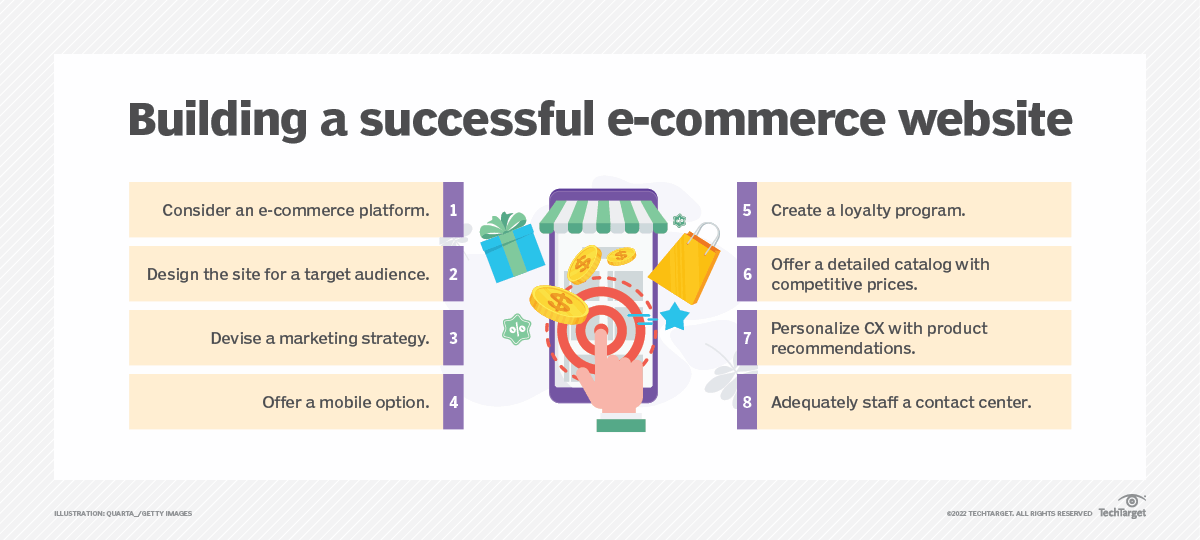
Building a successful e-commerce business isn’t a sprint, it’s a marathon. Mastering exceptional customer experience, robust technology, and effective marketing isn’t a one-time fix; it’s an ongoing process of refinement and adaptation. By consistently focusing on these three key areas, you’ll not only survive the competitive landscape but thrive, building a loyal customer base and a truly profitable online business.
So, are you ready to take your e-commerce game to the next level?
FAQ Resource
What if I have a limited budget? How can I still achieve these requirements?
Prioritize! Focus on one area at a time. Start with improving your customer service (free!), then optimize your website for speed and mobile (relatively inexpensive), and finally, explore low-cost marketing options like social media.
How do I measure the success of these three requirements?
Track key metrics like customer satisfaction (surveys, reviews), website conversion rates, and sales growth. Analyze your data regularly to identify areas for improvement and measure the impact of your strategies.
What if my competitors are already doing these things well?
Find your niche! Differentiate yourself through unique product offerings, exceptional customer service, or a highly targeted marketing approach. Focus on what sets you apart.
